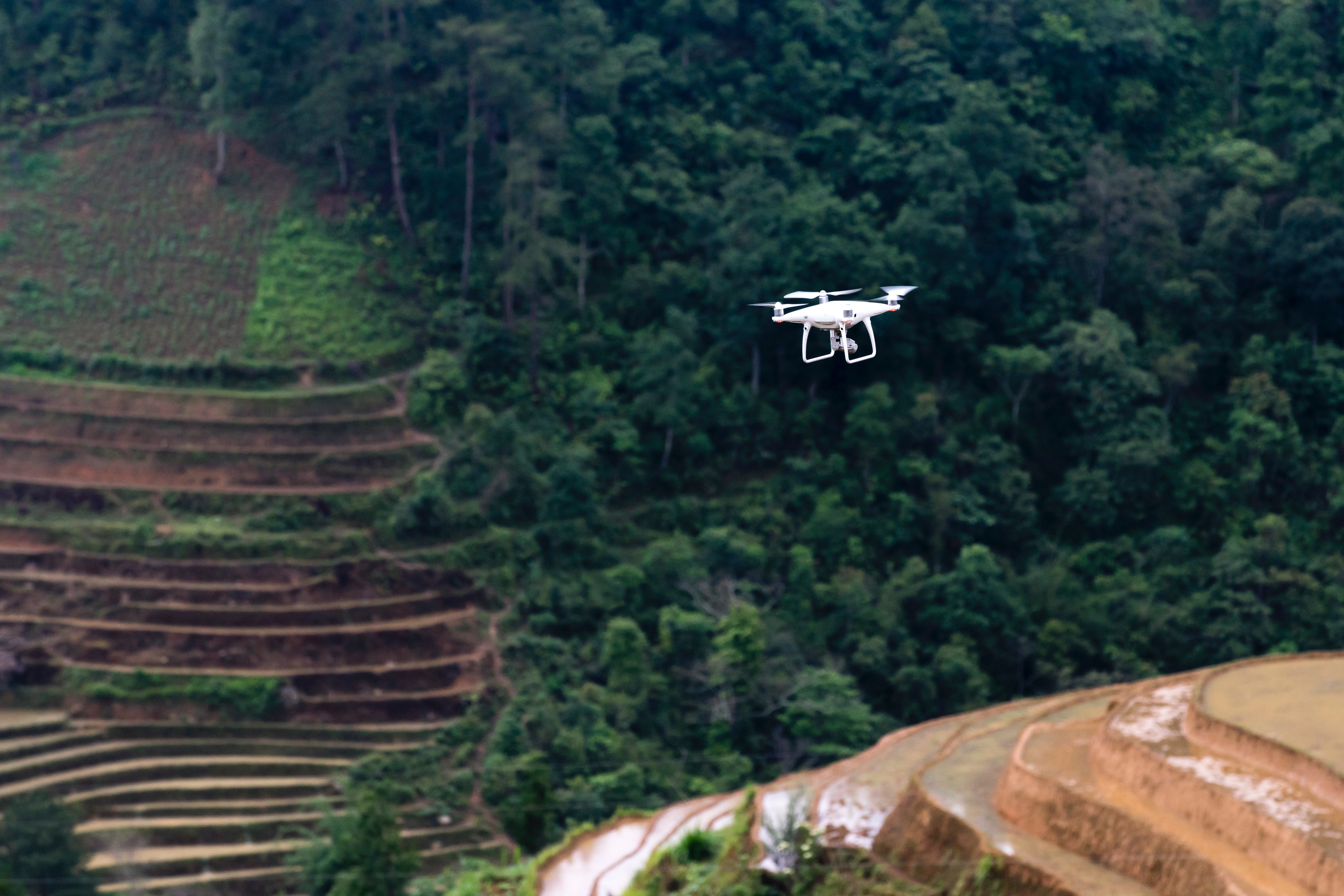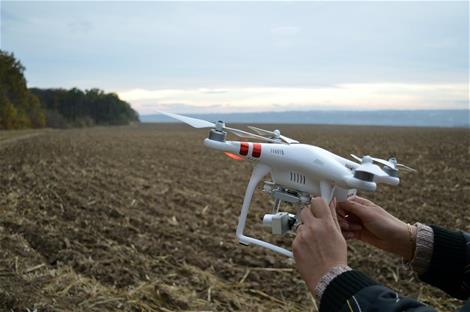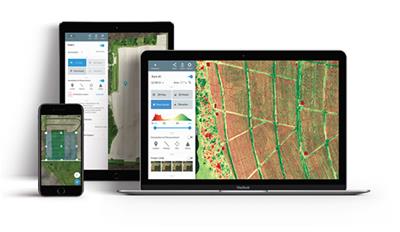
Drones are becoming commonly used tools within many industries, and agriculture is no exception. With the steady decline in cost and improvement in technology and dependability of drones, it's no surprise that their popularity is increasing. Precision agriculture has become increasingly important to the farming industry in the recent years as margins have been squeezed on many crops and producers are looking for any way to increase the profitability of their operations. The ability to monitor crops from the sky using agricultural drones provides valuable insights throughout the growing season, providing farmers and agronomists with important information to help optimize their farm operations.
providing farmers and agronomists with important information to help optimize their farm operations.
There are many uses for agricultural drones including scouting land and crops, checking for weeds and spot treating plants, monitoring overall crop health, managing livestock and monitoring for health issues, and more. Drones used in agriculture are equipped with advanced technology including dependable, longer-lasting batteries and propulsion systems, infrared cameras, programmable controllers, automated flight planning, and GPS navigation systems. Recent advancements in technology have put powerful, dependable, easy to use drones within the budget for most farmers, allowing operators of all sizes to benefit from real-time, detailed crop and livestock data that can be used to identify opportunities for increased profitability.
Real-Time Livestock Monitoring
Drones can help with monitoring livestock using the thermal imaging cameras, allowing farmers to keep track of their livestock more efficiently. Thermal imaging can help operators monitor the health of their herds by spotting injured or missing livestock, and can also help in watching for livestock predators.
Irrigation Monitoring and Management
Irrigation is a highly management-intensive farming practice requiring constant monitoring and supervision to ensure the proper amount of water is applied. Variation between rolling hills and flat or low-land areas in the field require a balancing act between over-and-underwatered areas within the same field. Drones equipped with a thermal camera can help spot irrigation issues or areas in the field that are stressed from receiving too little or too much water and provides a more efficient way of scouting field conditions versus walking the field or patrolling with a UTV.

Crop Surveying and Mapping
Satellite or aircraft imagery has traditionally been used in agriculture to get a large scale view of farm fields. Today, drones can be deployed to provide the same information with more effectiveness and better precision. Currently, many operators are using drones to secure real-time footage along with time-based activity that shows crop progression, providing detailed crop data for better decision-making. With today’s advanced drone sensors, producers are able to determine plant health based on light absorption, plus overall crop and plant health and current crop life cycle.
Crop Spraying and Spot Spraying
Drones are currently being tested for the application of pesticides. These drones can be operated completely autonomously or programmed to run on specific schedules. This technology could allow farmers to spot spray more effectively, saving money on field-wide applications by limiting applications to the spots in the field where the problem is present.

Seed Planting
Drone manufacturers are experimenting with systems that can shoot seed pods into prepared soil. This technology has the opportunity to minimize the need for on-the-ground planting, and it would allow seeding in soil conditions that would be inaccessible through traditional planting equipment.
Soil and Field Analysis
Drones can take 3D maps of existing soil/crop conditions so users are able to see if there are any issues in the soil quality, nutrient management, or soil dead zones. This can be extremely helpful to farmers and agronomists in determining the most effective patterns for planting inputs and managing their crops and soil through fertilizer and pesticide applications.
The use of drones in agriculture may be the next technological movement that will help agricultural producers increase their productivity and drive more profitability out of each acre they farm. Scouting field on foot or on ATVs or UTVs has traditionally been how farmers, agronomists, and researchers were forced to monitor crop and field conditions – which is a very time and labor intensive prospect. It is also sometimes difficult to see patterns in crop conditions from ground observations. Drones have the potential to replace much of traditional ground scouting with a more efficient aerial approach – allowing more ground to be covered more often and capturing patterns that are only visible from an aerial perspective.